A microwave oven is a common kitchen appliance that offers convenience for cooking and reheating food. However, finding the right place for it in the kitchen to save space is a concern for many. Here are some suggestions for choosing the ideal spot for your microwave.
1. How to Place a Microwave Oven in the Kitchen Sensibly
Choose the Right Microwave Size
The size of your microwave oven should match the designated space in your kitchen. Therefore, it’s essential to know the dimensions of your appliance to ensure it fits snugly into the intended area, whether it’s a cabinet space or a specific countertop spot.
Choose a microwave that is slightly smaller than the cabinet or space where you plan to place it. It is recommended to maintain a gap of 5-15 cm between the microwave and the edges of the cabinet. This space allows for adequate ventilation and heat dissipation, ensuring better performance and a longer lifespan for your appliance.
The capacity of your microwave should also match your usage needs. For instance, if you only use it to heat food for one person, a smaller capacity of 15-20 liters may suffice. On the other hand, if you cook for a larger household, opt for a larger capacity of 23-30 liters.
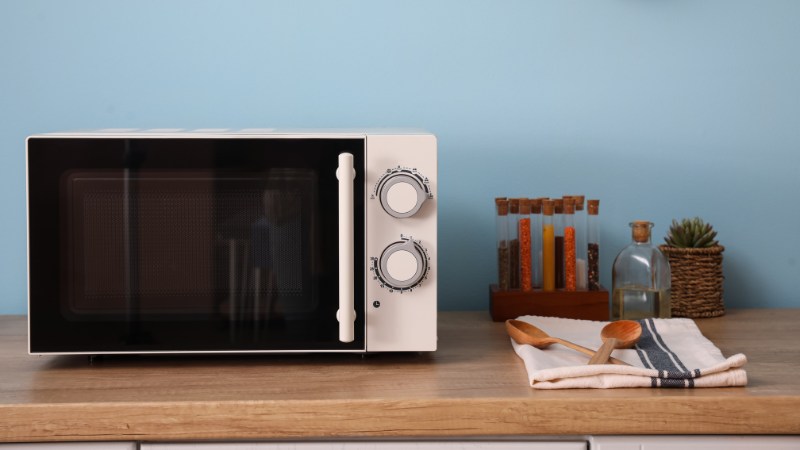 Choose the right microwave size
Choose the right microwave size
Avoid Placing it Near Flammable Objects
Microwave ovens generate heat during operation, so it’s crucial to keep them away from flammable objects like wood, wallpaper, electrical outlets, and wiring. Placing the microwave too close to these items could increase the risk of fire.
Ideally, position your microwave in a dry and well-ventilated area, away from moisture sources such as sinks, refrigerators, or areas prone to water exposure. Operating a microwave in a damp environment can lead to electrical shorts, reducing its lifespan and performance.
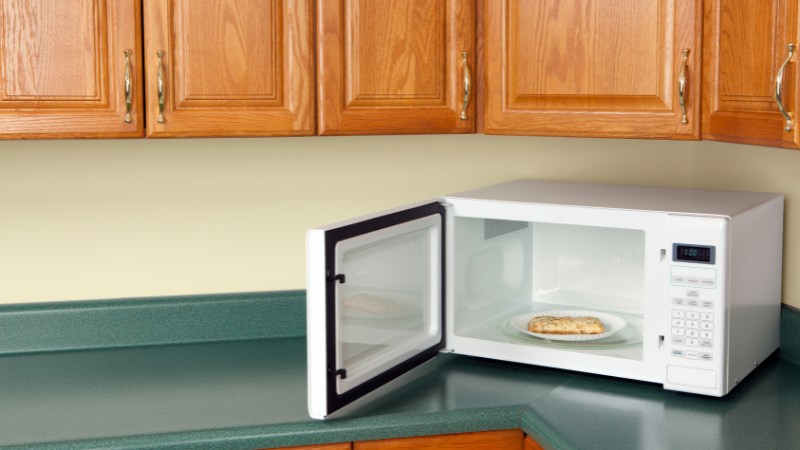 Keep it away from flammable objects
Keep it away from flammable objects
Maintain Distance from Other Electrical Appliances
Microwave ovens emit electromagnetic waves that can interfere with the functioning of other electronic devices, especially sensitive equipment like TVs, computers, and mobile phones. This interference can cause signal disruption, affecting image and sound quality and potentially damaging the devices.
Additionally, microwaves generate heat during operation, which can impact the durability of other heat-sensitive appliances such as refrigerators, washing machines, and dishwashers.
It’s recommended to maintain a distance of at least 30 cm between your microwave and other electrical appliances. This distance helps minimize the impact of electromagnetic waves and heat on nearby devices.
Furthermore, provide your microwave with its own electrical outlet, rather than sharing one with other appliances. This ensures a stable power supply and prevents overloading, reducing the risk of electrical faults.
For added safety, consider installing an extra layer of electrical and heat insulation between the microwave and other appliances. This protective layer will prevent heat transfer and safeguard your devices from potential damage.
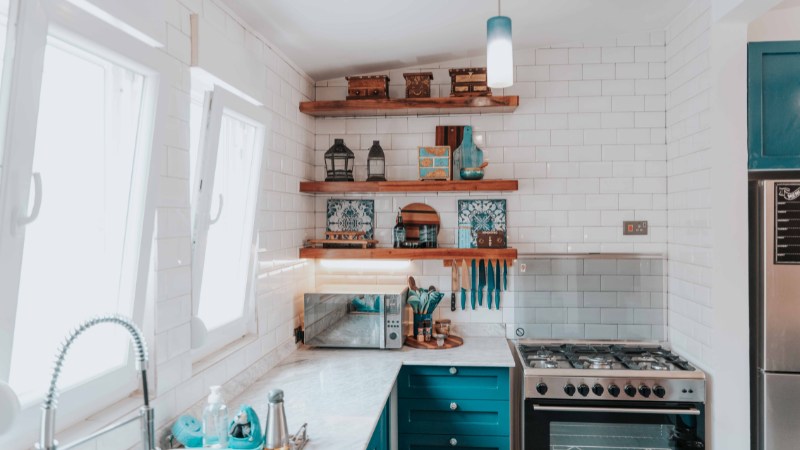 Keep a safe distance from other electrical appliances
Keep a safe distance from other electrical appliances
2. Suggested Places to Put Your Microwave
Above the Oven
Microwave ovens tend to be bulky, and placing them randomly can make your kitchen feel cramped and disorganized. Instead of allocating a separate, spacious area for it, consider “utilizing” the space above your regular oven.
This smart solution offers several advantages. Firstly, it optimizes vertical space and frees up countertop area, effectively expanding your kitchen space. As a result, your kitchen will feel airier and more organized.
Moreover, combining the microwave and oven creates a visually appealing ensemble, adding a touch of modernity and elegance to your kitchen. When the two appliances are of similar style and color, they complement each other, enhancing the overall aesthetic of your kitchen interior.
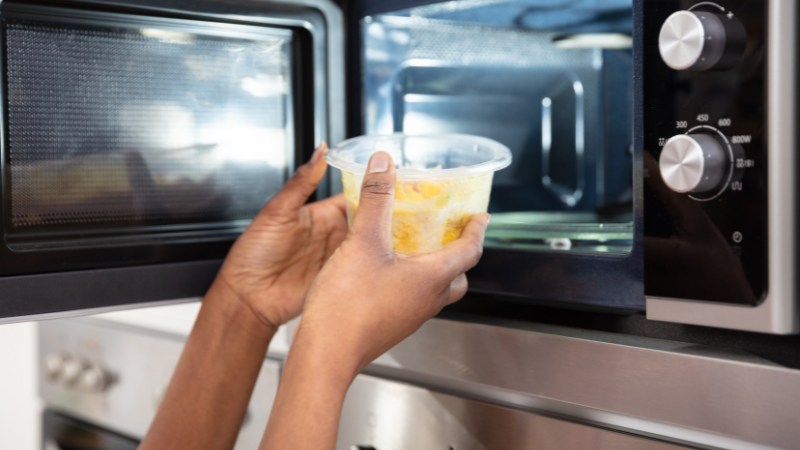 Place it above the oven
Place it above the oven
Inside the Kitchen Cabinets
Microwave ovens are essential appliances in modern kitchens. Choosing the right spot for your microwave ensures space efficiency, safety, and effective appliance usage. Here are three common places to consider:
Upper Cabinets
Pros
-
Safety: Upper cabinets keep the microwave away from water sources and high temperatures from the stove and refrigerator.
-
Space-saving: Utilizes the empty space in upper cabinets.
-
Convenience: Easy access and food retrieval from the microwave.
Cons
-
Inconvenience for children and the elderly due to height.
-
Caution needed when opening cabinet doors to avoid bumping into the microwave.
Lower Cabinets
Pros
-
Ease of use for all ages.
-
Safety: Avoids placing the microwave directly on the damp floor.
-
Creates a balanced look in the kitchen.
Cons
-
Requires installing a raised platform for ventilation.
-
Occupies space in the lower cabinets.
On the Kitchen Counter
Pros
-
Easy to monitor and operate the microwave during use.
-
Convenient for removing food from the microwave.
-
Creates a focal point in the kitchen.
Cons
-
Occupies valuable counter space.
-
Needs to be placed away from other electrical appliances to avoid interference.
-
Requires regular counter cleaning to maintain food hygiene.
 Inside the kitchen cabinets
Inside the kitchen cabinets
Inside a Kitchen Cabinet
Nowadays, many families opt to place their microwave ovens inside kitchen cabinets. This choice offers several benefits:
-
Protection: The cabinet shields the microwave from dust, moisture, insects, and mold, ensuring its longevity.
-
Space-saving: Maximizes cabinet space, resulting in a neat and tidy kitchen.
-
Convenience: Easy access during cooking, saving time and effort.
Additionally, you can place other frequently used kitchen appliances, such as coffee makers, blenders, and mixers, in the same cabinet. This streamlined arrangement enhances the aesthetics of your kitchen while keeping frequently used items within easy reach.
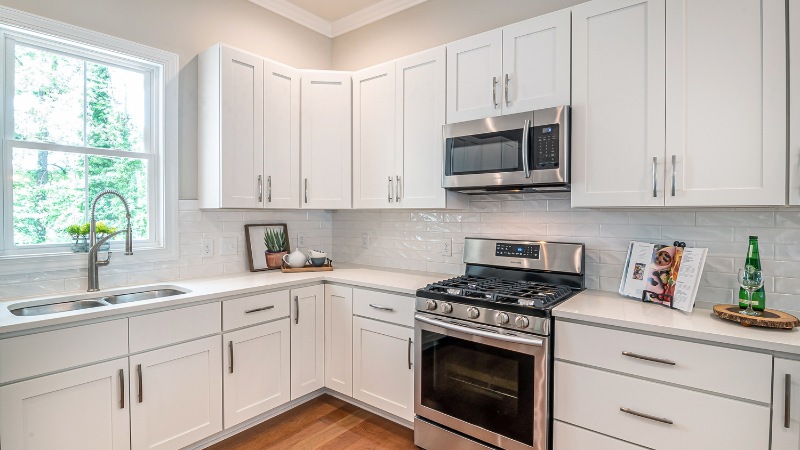 Inside a kitchen cabinet
Inside a kitchen cabinet
Microwave ovens are indispensable in modern kitchens, offering convenience and time-saving benefits. However, careful consideration is necessary when choosing their placement to ensure safety, efficiency, and optimal space utilization.


































